
Diseases and pests of Hawthorn
Detect and address them
Contents
These small deciduous and low-maintenance trees known as hawthorns, or Crataegus, boast a vibrant spring flowering and are laden with red, yellow, or blue berries in autumn. Iconic of Europe’s wild hedgerows, hawthorns can also take on a more ornamental role in the garden, where their ease of cultivation often delights even the most inexperienced gardeners. Sometimes falling victim to pests or diseases, the most well-known of which is fire blight, the hawthorn can occasionally decline without you necessarily recognising the symptoms or finding the appropriate remedy. Follow our tips to identify the diseases and pests affecting hawthorns and discover natural and effective ways to treat them.

Flowering of Crataegus
Bacterial blight
Symptoms and cause
Caused by the bacterium Erwinia amylovora, fire blight is a formidable disease. Fortunately, it only affects a few species of Rosaceae, including hawthorns: Japanese quince, cotoneasters, apple and pear trees, as well as pyracantha. Given that this bacterium poses a real threat to the fruit production of apples and pears, certain species susceptible to fire blight have even been banned from planting in France since a 1994 decree. Thus, the sowing of Crataegus is notably prohibited, as well as the multiplication and planting of Crataegus plants from sowing, “except for those intended to serve as rootstocks in production establishments“. If your garden hosts one or more hawthorns, watch for signs of blackening of the branches, wilting or drying of leaves and flowers. Identifying fire blight is not always straightforward, as other diseases can present similar symptoms.
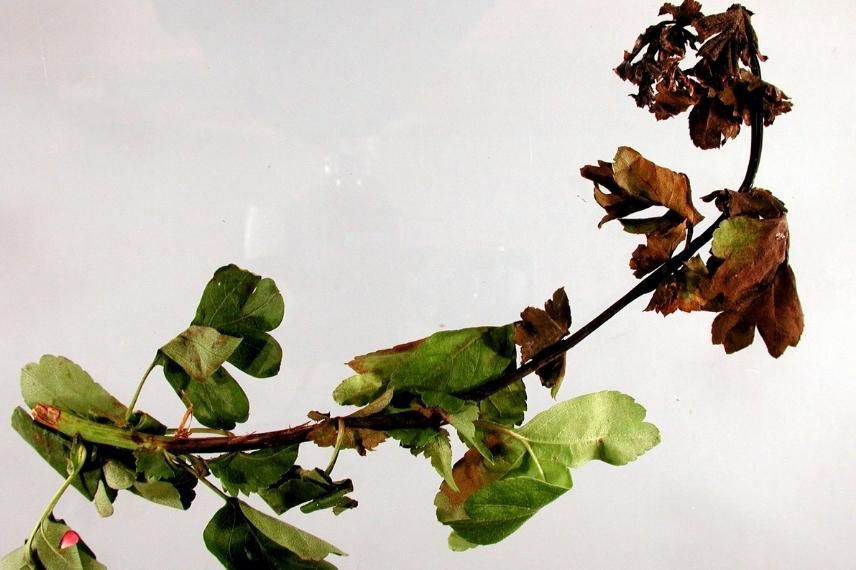
Branch contaminated by fire blight
Treatment
There is no curative treatment for fire blight. Monitoring for signs of this disease on potentially affected plants will allow for rapid intervention in case of contamination. If your garden has one or more sick hawthorns, prune the branches well below the affected area, seal the pruning waste in a bin bag, and dispose of it at a waste facility. If the entire tree is affected, it will unfortunately be necessary to fell it. It is now prohibited to burn green waste, except for specific exemptions, particularly concerning fire blight in certain areas. If you do not have a green waste collection area, contact your local council to find out the local arrangements for this waste.
Be sure to disinfect your pruning tools and monitor the plant species in your garden that may have been contaminated.
→ To learn more about treating fire blight, check our dedicated article: “Fire blight: identifying and controlling this disease“.
Hawthorn rust
Symptoms and cause
Easily recognisable by its round orange pustules, rust is a very common disease in the garden. It is caused by the fungus Gymnosporangium sp: small spots appear on the upper side of the leaves while pustules cover the underside. Damage primarily spreads in spring and summer as warm, humid weather favours rust attacks. Hawthorn is among the many plants that can be affected, alongside roses, St. John’s wort, mahonias, as well as pelargoniums, garlic, and leeks. Affected plants are generally not severely harmed but they quickly become unsightly, and premature leaf drop is noted.

Visible signs of rust
Treatment
- Systematic removal of affected leaves will help limit the spread of rust on your hawthorn;
- Treatments based on horsetail decoction, combined with nettle manure, will be effective both as a preventive and curative measure;
- Fungicides such as Bordeaux mixture or sulphur will be effective treatments;
- Finally, as the fungus survives in winter on fallen leaves, they must be collected and disposed of at a waste facility.
→ To learn more about treating rust, check our dedicated article: “Getting rid of rust disease. What solutions are available?”
Discover other Hawthorn Crataegus
View all →Available in 1 sizes
Available in 1 sizes
Available in 1 sizes
Available in 3 sizes
Available in 1 sizes
Available in 3 sizes
Available in 1 sizes
Available in 1 sizes
Available in 1 sizes
Available in 1 sizes
Powdery mildew
Symptoms and Cause
Often referred to as “white disease“, powdery mildew is extremely common: a white, farinose coating covers the leaves, new shoots, and flower buds. The young leaves affected may become distorted and sometimes perforated. Not demanding in terms of water, powdery mildew can spread throughout the growing season. The affected hawthorn may become weakened and its growth slowed.

Leaf contaminated by powdery mildew
Treatment
To eradicate powdery mildew on hawthorns, it is advisable to use recognised natural treatments such as sodium bicarbonate or potassium bicarbonate-based anti-powdery mildew treatments. Cut back contaminated stems in spring and summer and dispose of them at the waste disposal site in sealed bags. Finally, promote air circulation between plants in the garden by spacing out the vegetation and lightly pruning bushes, climbing plants, and perennials regularly.
→ To learn more about treating powdery mildew, check our dedicated article: “Powdery mildew or white disease: revention and treatment.
Read also
How to pair Hawthorns?Aphids
Symptoms and cause
Grouped on young shoots in colonies, aphids can be of various colours: black, green, grey, or whitish… these insects suck the sap from your hawthorns to feed, to their great detriment! The attacked shoots and leaves curl up and honeydew flows out, on which sooty mould forms. No plant is spared by aphids, and even though their attacks are spectacular, they are generally not significantly affected. Nevertheless, aphids transmit viruses to them, hence the need to control them.
 Leaf infested with aphids
Leaf infested with aphids
Treatment
Encouraging the development of beneficial insects can greatly resolve the aphid problem on your hawthorns as well as on other plants. Diverse and free hedges, differentiated mowing, insect hotels, and piles of leaves and wood: simple actions can allow you to garden without tiring yourself and let nature play its regulatory role. Ladybird larvae are also available for you to reintroduce at home and limit the spread of aphids.
→ To learn more about aphid treatment, check our dedicated article: “Aphid: identification and treatment. Our tips for natural and effective control”.
Tenthrid larvae
Symptoms and cause
Tenthredes, related to wasps, belong to the order Hymenoptera, and their larvae closely resemble caterpillars, which they are not, as they do not turn into butterflies. Like caterpillars, they have the unfortunate tendency to voraciously munch on the leaves of many plants: barberry, St. John’s wort, apple, pear, cherry, rose… and of course your magnificent hawthorn! If these larvae adopt the characteristic S position when threatened: there’s no doubt, you are dealing with tenthrède larvae.
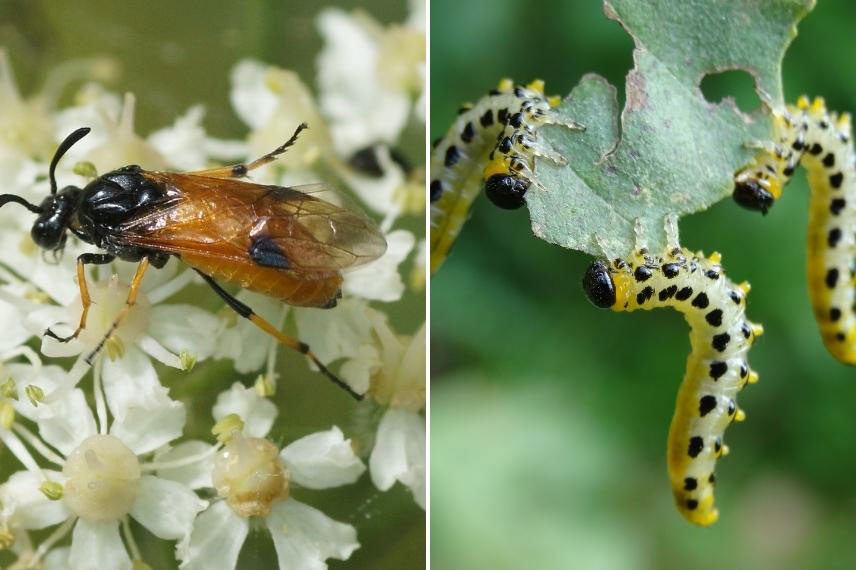
Adult and tenthrède larvae
Treatment
In the event of an attack on your hawthorns, gently remove the affected leaves along with the larvae and crush them. Unlike some caterpillars, they are not urticating. At the end of their development, the larvae drop to the ground to hibernate: cultivating the soil in early autumn and then in spring will help interrupt their cycle by exposing them to the cold and their natural predators. Again, welcoming these predators by providing them with a special place in your garden will help rebalance things, as birds, shrews, ants, and spiders delight in these false caterpillars.
→ To learn more about natural hedges and biodiversity, check out our dedicated sheet: “A natural hedge to enhance biodiversity. Why, how, and suitable plants.”
- Subscribe!
- Contents
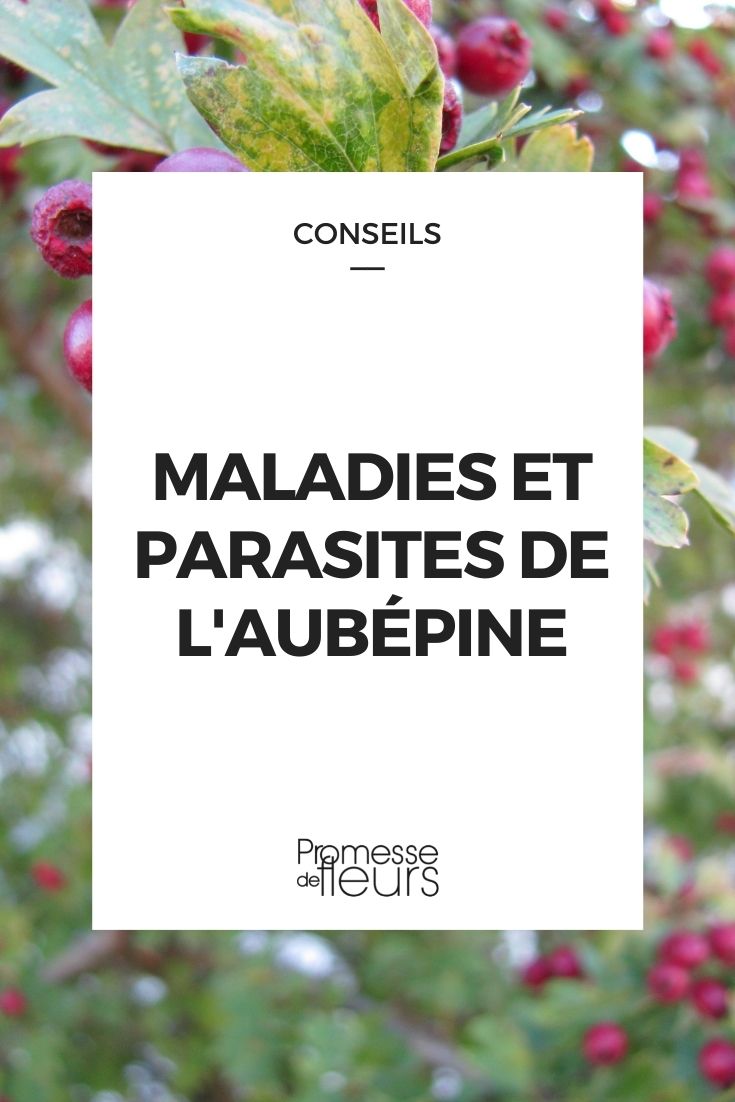































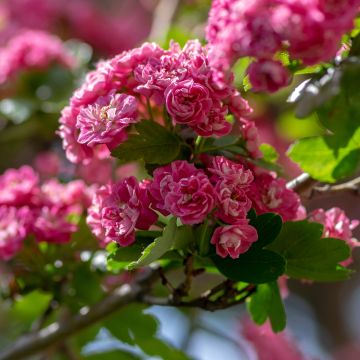

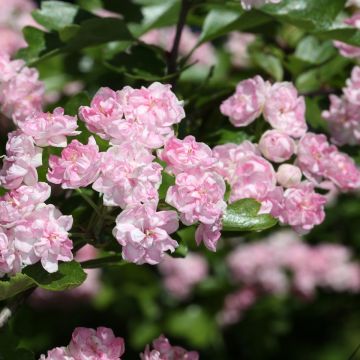


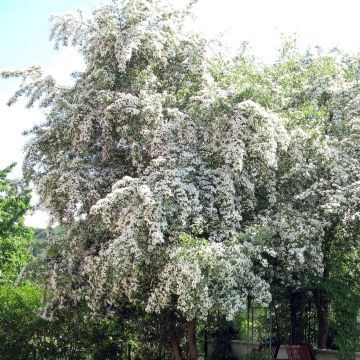

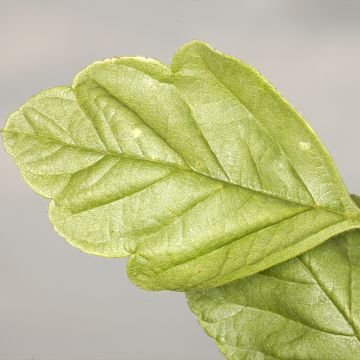
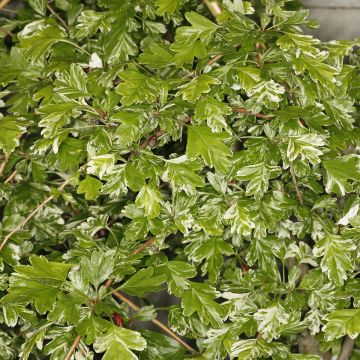
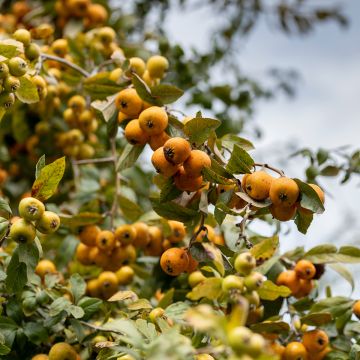
Comments